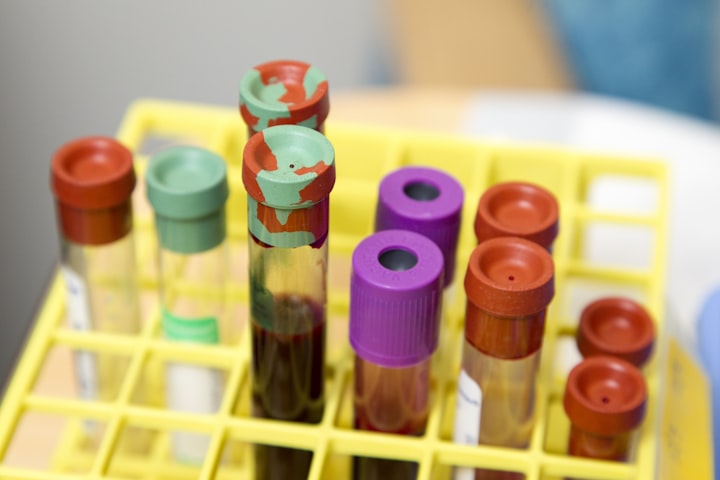Prostate Problems: When You Can’t Pee, Try This 60-Second Powerful Ritual...
Taking Charge of Prostate Health: Understanding the Issues and Exploring Effective Solutions

Prostate Problems: When You Can’t Pee, Try This 60-Second Powerful Ritual...
Prostate problems are a significant concern for men, particularly as they age. The prostate gland plays a vital role in the male reproductive system, and any issues related to it can have a substantial impact on overall health and quality of life. In this article, we will explore some important words associated with prostate problems to provide a better understanding of this common issue.
1. Prostate: The prostate is a small gland located below the bladder in men. It surrounds the urethra, the tube that carries urine and semen out of the body. The primary function of the prostate is to produce fluid that nourishes and transports sperm.
2. Prostate Enlargement: Also known as benign prostatic hyperplasia (BPH), prostate enlargement is a common condition that affects many men as they age. It occurs when the prostate gland grows in size, squeezing the urethra and causing symptoms such as urinary frequency, urgency, weak urine flow, and incomplete emptying of the bladder.
3. Prostatitis: Prostatitis refers to inflammation of the prostate gland. It can be caused by bacterial infection, but in some cases, the exact cause may remain unknown. Symptoms of prostatitis include pain or discomfort in the pelvic region, urinary problems, and sometimes flu-like symptoms.
4. Prostate Cancer: Prostate cancer is one of the most prevalent forms of cancer among men. It develops when cells in the prostate gland start to grow uncontrollably. Early-stage prostate cancer may not cause noticeable symptoms, but as it progresses, it can lead to urinary difficulties, blood in the urine or semen, erectile dysfunction, and bone pain.
5. PSA (Prostate-Specific Antigen): PSA is a protein produced by both normal and cancerous cells in the prostate gland. A PSA blood test measures the level of this protein in the bloodstream. Elevated PSA levels can be an indication of various prostate conditions, including prostate cancer, although further diagnostic tests are needed to confirm the presence of cancer.
6. Digital Rectal Exam (DRE): A digital rectal exam is a physical examination performed by a healthcare provider to assess the size, shape, and condition of the prostate gland. During this procedure, the doctor inserts a gloved, lubricated finger into the rectum to feel for any abnormalities, such as lumps or hard areas.
7. Urinary Retention: Urinary retention refers to the inability to empty the bladder completely. It can be a symptom of various prostate issues, including an enlarged prostate or prostate cancer. Urinary retention can cause discomfort, frequent urination, urgency, and an increased risk of urinary tract infections.
8. Transurethral Resection of the Prostate (TURP): TURP is a surgical procedure often used to treat benign prostatic hyperplasia (BPH) when medication fails to provide relief. During TURP, a portion of the prostate gland is removed using a resectoscope, a specialized instrument inserted through the urethra.
9. Androgen Deprivation Therapy (ADT): ADT, also known as hormone therapy, is a treatment used in advanced prostate cancer. It aims to reduce the levels of male hormones, such as testosterone, to slow down the growth of cancer cells and relieve symptoms.
10. Watchful Waiting: Watchful waiting is a management approach where the healthcare provider closely monitors the progression of prostate cancer or other prostate conditions without immediate treatment. It is often recommended for older men with slow-growing prostate cancer or those who have other significant health issues.
Click here to get solution for prostate problem
11. Prostatectomy: Prostatectomy is a surgical procedure to remove the entire prostate gland. It is commonly performed in cases of prostate cancer that has not spread beyond the gland. Depending on the extent of cancer and patient factors, the surgeon may choose from different approaches to prostatectomy, including open surgery, laparoscopic surgery, or robot-assisted surgery.
12. Radiation Therapy: Radiation therapy uses high-energy radiation to kill cancer cells or shrink tumors. It is a common treatment option for localized prostate cancer, either as the primary treatment or after surgery to eliminate any remaining cancer cells.
13. Brachytherapy: Brachytherapy, also known as internal radiation therapy, involves the placement of small radioactive seeds directly into the prostate gland. These seeds emit radiation to kill cancer cells while minimizing damage to surrounding healthy tissues.
14. Cryotherapy: Cryotherapy is a treatment that involves freezing and destroying abnormal prostate tissue, such as cancer cells. It is a minimally invasive procedure that uses extremely cold temperatures to target and destroy the diseased tissue.
15. Erectile Dysfunction: Erectile dysfunction, also referred to as impotence, is the inability to achieve or maintain an erection sufficient for sexual intercourse. Prostate problems, such as prostate surgery or radiation therapy, can sometimes contribute to the development of erectile dysfunction.
16. Incontinence: Incontinence refers to the loss of bladder control, leading to involuntary urine leakage. It can occur as a result of prostate problems, such as prostate surgery, which can disrupt the normal functioning of the urinary sphincter.
17. Prostate-Specific Membrane Antigen (PSMA): PSMA is a protein found on the surface of prostate cells, including prostate cancer cells. PSMA can be targeted in diagnostic tests and treatments, such as PSMA PET scans, which provide detailed imaging of prostate cancer spread, helping with staging and treatment planning.
18. Active Surveillance: Active surveillance is a strategy used for monitoring low-risk prostate cancer without immediate treatment. It involves regular check-ups, PSA tests, and biopsies to assess any changes in the cancer's behavior. Treatment is considered only if there is evidence of disease progression.
19. Prostate-Specific Imaging: Prostate-specific imaging techniques, such as multiparametric MRI and prostate-specific ultrasound, provide detailed images of the prostate gland, helping in the diagnosis and staging of prostate cancer. These imaging modalities help to precisely identify the location and extent of the disease.
20. Chemotherapy: Chemotherapy uses powerful drugs to kill cancer cells or inhibit their growth. It is often used in advanced or metastatic prostate cancer cases, where cancer has spread beyond the prostate gland.
21. Hereditary Prostate Cancer: Hereditary prostate cancer refers to cases where genetic factors play a significant role in the development of the disease. Mutations in specific genes, such as BRCA1 and BRCA2, can increase the risk of prostate cancer and may be inherited from family members.
22. Prostate Health Supplements: Prostate health supplements are dietary supplements that contain various ingredients, such as saw palmetto, beta-sitosterol, and lycopene, which are believed to support prostate health and alleviate symptoms associated with prostate problems. However, their effectiveness is still a subject of ongoing research.
23. Prostate Biopsy: A prostate biopsy involves the collection of small tissue samples from the prostate gland for microscopic examination. It is commonly performed if an abnormality is detected during a prostate-specific antigen (PSA) test or other diagnostic procedures to confirm or rule out the presence of cancer.
24. Palliative Care: Palliative care focuses on improving the quality of life for individuals with serious illnesses, including advanced prostate cancer. It aims to alleviate symptoms, manage pain, and provide emotional and psychological support to patients and their families.
25. Prostate Health Awareness: Prostate health awareness campaigns aim to educate men about the importance of regular check-ups, early detection, and the available treatment options for prostate problems. These initiatives encourage men to take proactive steps to maintain their prostate health.
Say goodbye to prostate problems with FLUXACTIVE, the ultimate solution for men's health. Our groundbreaking formula is specially designed to promote a healthy prostate and improve overall well-being.
FLUXACTIVE combines the power of natural ingredients known for their prostate-supporting properties. With each dose, you'll experience a synergistic blend of antioxidants, vitamins, and minerals that work together to maintain prostate health and reduce the risk of complications.
Click here to get solution for prostate problem
In conclusion, prostate problems can significantly impact a man's health and quality of life. It is crucial to stay informed about the various conditions associated with the prostate and the available solutions. Whether it's benign prostatic hyperplasia (BPH), prostatitis, or prostate cancer, early detection and proper management are key.
Seeking medical advice and exploring effective treatments, such as medication, surgery, radiation therapy, or natural supplements like FLUXACTIVE, can help address prostate issues and alleviate symptoms. Remember, maintaining a healthy prostate is essential for overall well-being and longevity. Prioritize your prostate health, stay proactive, and embrace the solutions that empower you to live a fulfilling life.





Comments
There are no comments for this story
Be the first to respond and start the conversation.